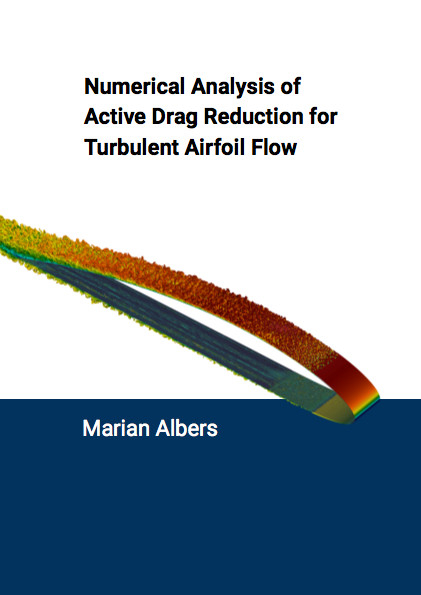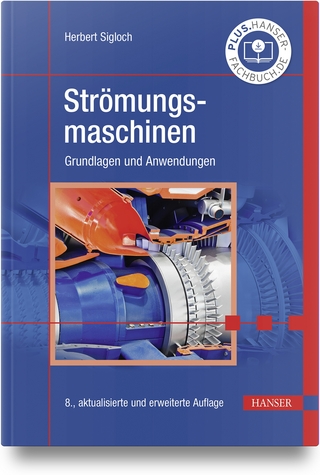
Numerical Analysis of Active Drag Reduction for Turbulent Airfoil Flow
Seiten
2021
Dr. Hut (Verlag)
978-3-8439-4806-7 (ISBN)
Dr. Hut (Verlag)
978-3-8439-4806-7 (ISBN)
- Keine Verlagsinformationen verfügbar
- Artikel merken
Turbulent boundary layers over slender bodies generate a substantial drag force, which can make up a large share of the overall drag of large aircraft in cruise flight or high speed trains. Active drag reduction approaches, which introduce external energy into the system, are capable of considerably reducing the friction forces attributed to turbulent wall-bounded flows. Among the numerous active techniques, spanwise traveling transversal surface waves is a successful approach for canonical flows, e.g., turbulent channel flow. However, several important questions have not been addressed adequately, yet. Therefore, high-resolution large-eddy simulations are conducted to study active drag reduction of turbulent flat plate boundary layer as well as an airfoil flow, where drag reduction via traveling transversal surface waves is applied.
Zero-pressure gradient turbulent boundary layer flow is the basis for a large parametric study of spanwise traveling transversal surface waves. The results show a maximum drag reduction of -31% and net power saving of up to -10%. An optimum actuation period in inner units is determined and the oscillating spanwise shear is identified, which is caused by the secondary flow field and connected to the drag reduced state.
The investigation is then extended to swept flow. For small sweep angles only a minor decrease of the drag reduction is found for partially downstream traveling waves. Furthermore, the drag-reduced near-wall flow persists even for larger sweep angles.
Finally, spanwise traveling transversal surface waves are applied to the turbulent flow around an airfoil wing section. The actuation of large parts of the upper and lower surface leads to a significantly reduced friction and total drag and a moderately increased lift. Strong local reductions of the wall-shear stress are also obtained for parts of the flow which experience a strong adverse pressure gradient.
Zero-pressure gradient turbulent boundary layer flow is the basis for a large parametric study of spanwise traveling transversal surface waves. The results show a maximum drag reduction of -31% and net power saving of up to -10%. An optimum actuation period in inner units is determined and the oscillating spanwise shear is identified, which is caused by the secondary flow field and connected to the drag reduced state.
The investigation is then extended to swept flow. For small sweep angles only a minor decrease of the drag reduction is found for partially downstream traveling waves. Furthermore, the drag-reduced near-wall flow persists even for larger sweep angles.
Finally, spanwise traveling transversal surface waves are applied to the turbulent flow around an airfoil wing section. The actuation of large parts of the upper and lower surface leads to a significantly reduced friction and total drag and a moderately increased lift. Strong local reductions of the wall-shear stress are also obtained for parts of the flow which experience a strong adverse pressure gradient.
| Erscheinungsdatum | 01.07.2021 |
|---|---|
| Reihe/Serie | Strömungsmechanik |
| Verlagsort | München |
| Sprache | englisch |
| Maße | 148 x 210 mm |
| Gewicht | 235 g |
| Themenwelt | Naturwissenschaften ► Physik / Astronomie ► Strömungsmechanik |
| Technik | |
| Schlagworte | Active Drag Reduction • Airfoil Flow • turbulent boundary layers |
| ISBN-10 | 3-8439-4806-2 / 3843948062 |
| ISBN-13 | 978-3-8439-4806-7 / 9783843948067 |
| Zustand | Neuware |
| Haben Sie eine Frage zum Produkt? |
Mehr entdecken
aus dem Bereich
aus dem Bereich


